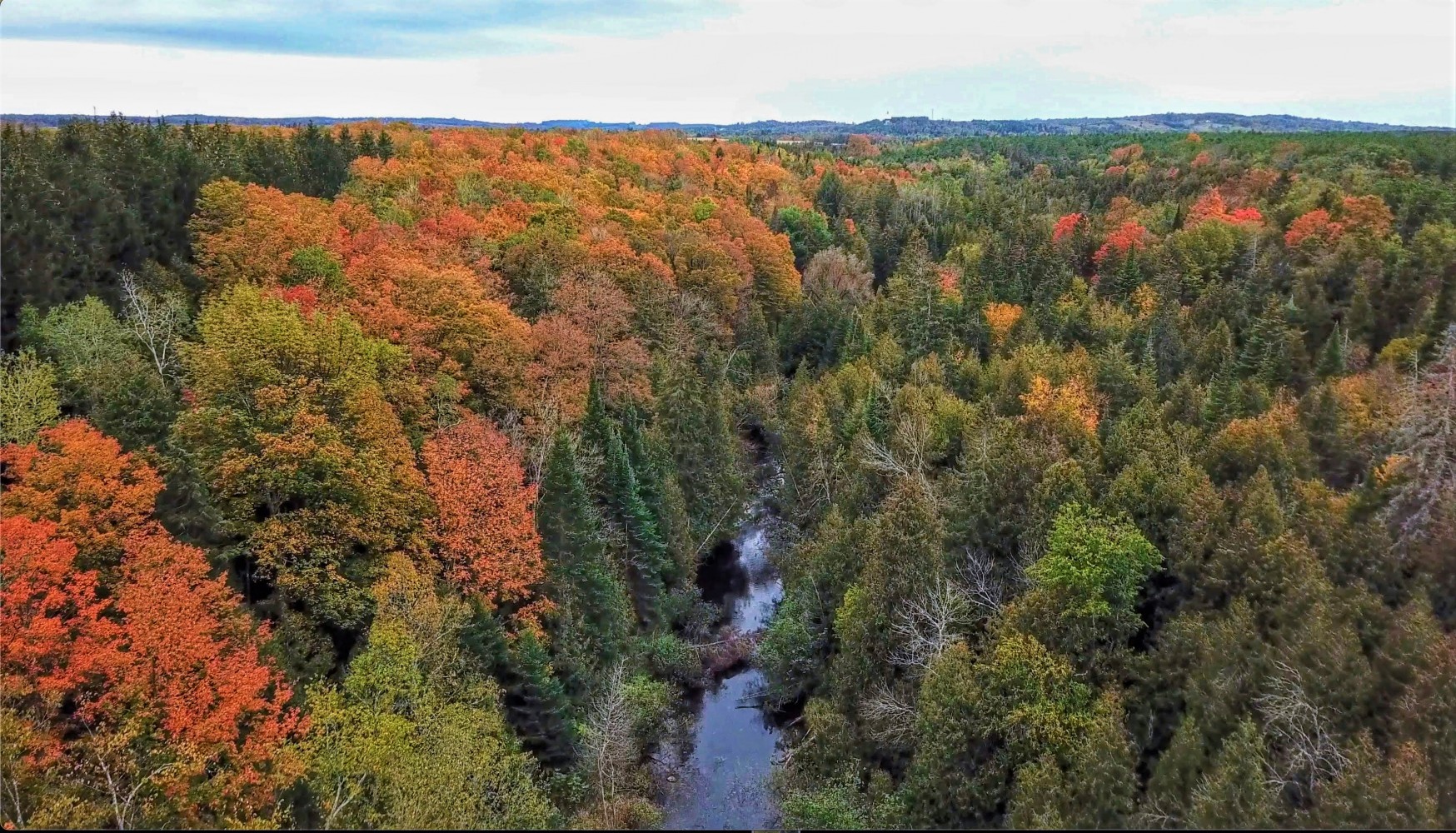
Town of Erin residents fighting to save West Credit River from sewage plant; Peel drinking water could be impacted
Everyday Ken Cowling does a four mile loop around the Village of Erin.
He lives in the southern part of this small municipality nestled in the bucolic rolling hills of Ontario’s protected Greenbelt. He’s lived his life among its 3,000 residents, just west of Caledon, north of Georgetown, and spends most of his time outside, fishing, hiking and camping in the heavily forested surroundings nourished by the Credit River.
His daily routine takes him through the village, past the rows of quaint stores, before he turns to head down a partially hidden gravel trail. When he nears the bowstring bridge made of arched, handcrafted concrete, the sight always takes his breath away.
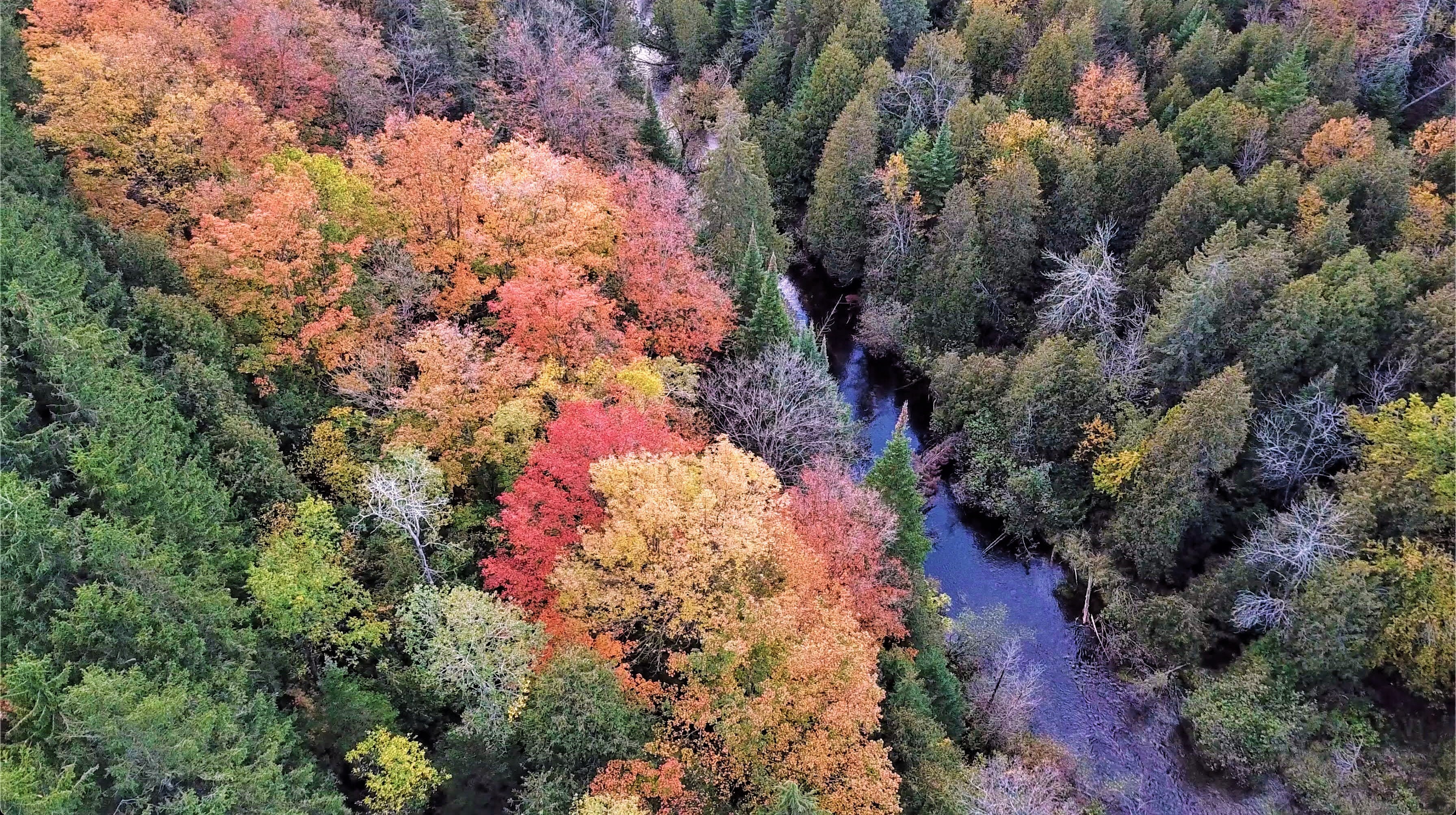
(Steven Noakes/Coalition of the West Credit River)
Overlooking the West Credit River, surrounded by majestic deciduous and coniferous trees that frame Mother Nature’s perfectly painted canvas, Cowling takes a seat on a large boulder.
“I sit there and I just ponder and ponder,” he says. “And that’s a nice little break and then I get up and I carry on my walk.”
One day he saw an orange string attached to the bridge with a nail. He figured it had something to do with the giant wastewater treatment facility being pushed by the Town Council.
He was overcome with emotion. Millions of litres of runoff from the facility would be poured into the river every day.
Cowling swore, on the spot, that he would do everything in his power to stop the facility from being built.
He knew it would be a David versus Goliath battle.
But that wasn’t about to stop him.

Ken Cowling has garnered attention with his signs; he’s distributed over 700 to residents of Erin and nearby communities.
(Contributed)
The idea of a wastewater treatment facility (WWTF) in Wellington County has been circling for a decade. Its genesis started with the search for an ideal place for the facility, and last year, after other locales managed to stifle any designs for using their community to house a sewage treatment plant for the coming population, council finally settled on a location just north of Wellington Road 52 and West of 10th Line Road.
Like the Region of Peel, this area of Wellington County is undergoing planning to manage growth for the next 30 years. The Village of Erin is expected to triple in size, jumping from its current 3,000 residents to more than 10,000 by 2041.
Erin is sprinkled with small, red-brick post war homes, connected by tree-lined country roads. The growth anticipated is more of a sprawling, suburban-style concept, as people move out of the GTA looking for more space and less chaos.
The town has relied on individual septic systems which get cleaned out when full and the waste is delivered to nearby municipal treatment plants. Usually household tanks can go three to five years (depending on the number of people) before being pumped.
According to the Town of Erin, the majority of septic systems are reaching their end of life after 20 to 30 years in use. Replacement can be costly and falls on the individual property owner. However, with the increase in population over the next few decades, the Town Council proposed a wastewater treatment facility to accommodate a new municipal sewage system like those seen in most towns and cities.
The project is expected to cost $126 million, with the town paying $50 to $60 million and residential home developers paying the rest. The proposed site will include a septage receiving station, biosoil management and disposal, and an effluent pumping station. When complete, the facility will emit 7.2 million litres of treated sewage runoff a day and service both Erin and the nearby village of Hillsburgh to the north.
The Town is currently looking for a contractor and is set to begin construction in late 2022.
The runoff would pour out into the West Credit River, about six kilometres from the Forks of the Credit Provincial Park, in the heart of the headwaters that flow south from the Greenbelt into Peel.
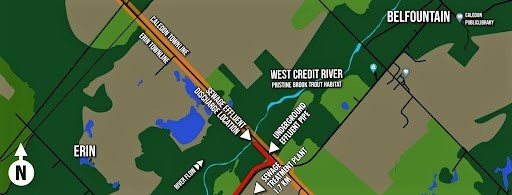
The facility will have an underground pipe that would bring effluent to the West Credit River.
(Coalition of the West Credit River)
The plan has been heavily criticized by locals who use septic tanks and don’t want to switch over to the new system. Many have cited the potential destruction of the local watershed and have vowed to fight the project.
The effluent waste (once cleaned) will be disposed into the West Credit River, just off Winston Churchill Boulevard.
Peel’s G.E Booth Wastewater facility, like others that use the same technology to clean sewage before disposing of the runoff, is a similar system to the one being planned in Erin.
According to the Region of Peel’s website, wastewater undergoes three treatment processes where solids and liquids are separated and disinfected with chemicals. Chlorine is used to clean the liquid portion, while the solid (or sludge) is taken away separately and incinerated.
The most strenuous part of treatment is the removal of phosphorus, which settles to the bottom of clarifying tanks once ferrous chloride is applied. In the case of both Peel facilities (G.E Booth and Clarkson) chlorination using sodium hypochlorite is used. This is consistent with all facilities in Ontario according to the provincial government’s website.
After the water has been disinfected, a process of de-chlorination must happen in order for the water to be safely discharged back into nature. Even with the cleaning process, the treated water is far from its natural state.
Credit Valley Conservation Authority (CVC) monitors the watersheds from Erin to Mississauga and told The Pointer it has been heavily involved in the planning of the project.
“CVC continues to work with the Town of Erin and provincial agencies to incorporate measures into the design and construction for the WWTF to reduce the risks of natural hazards and mitigate potential negative impacts to the environment,” an agency spokesperson said.
The Town of Erin (the broader area surrounding the village) received approval of the environmental assessment (EA) in August 2019, which CVC commented on.
“It is important to note that CVC does not approve EAs, but provides comment throughout the EA process to ensure CVC’s interests are appropriately addressed,” the CVC spokesperson told The Pointer in an email. “CVC continues to work with the Town of Erin and provincial agencies to ensure the effects on the watershed are appropriately mitigated.”
But locals and environmental activists have questioned the wisdom of building a sewage facility in the middle of the Greenbelt and dumping the cleaned waste into a major watershed.
The West Credit River is home to the Brook Trout, a sensitive species that has faced significant loss of population in the past 50 years. According to Mark Heaton, a senior biologist with Ontario Streams, water temperature and chloride coming out of the Erin WWTF will have to be closely monitored in order for the local population to survive.
Late January, Heaton described the facility's potential impacts on the Brook Trout on behalf of the Coalition for the West Credit River (CWCR) — Izaak Walton Fly Fishing Club, Ontario Rivers Alliance, Belfountain Community Organization, Trout Unlimited Canada and Ontario Streams — to Peel Regional Council.
Brook Trout thrive in cold, freshwater environments, where the temperature is not greater than 19 degrees celsius for a prolonged period of time. In order for the fish to spawn, water has to be below nine degrees, and the fish will only grow in water between 13 and 16 degrees, Heaton explained.
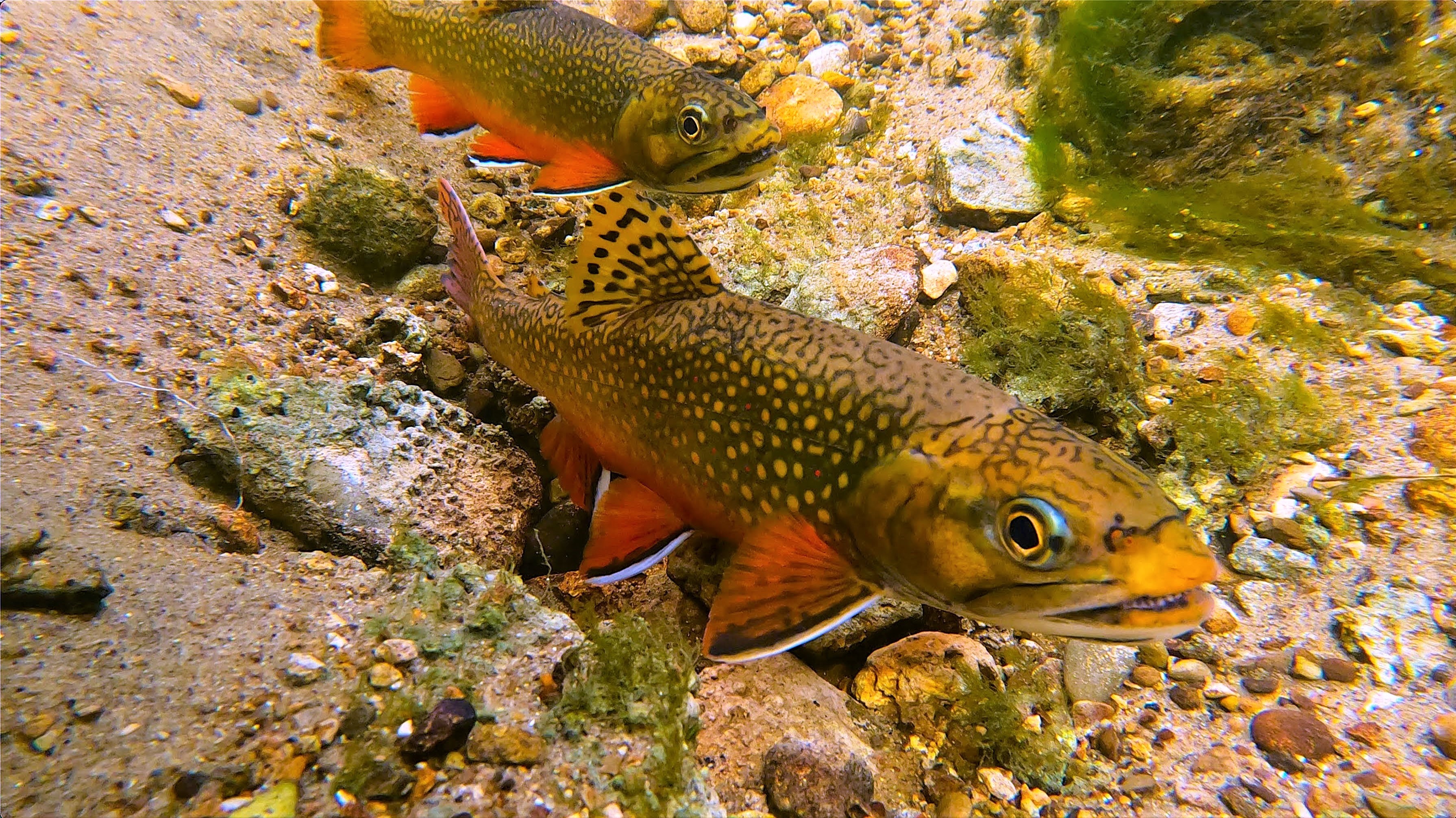
The Brook Trout population has declined quickly due to urbanization, climate change and the increase of salt in their habitat.
(Steven Noakes/Coalition of the West Credit River)
He pointed to reports from consulting companies hired by the Town, assuring the temperature would not increase past 19 degrees. But information from other nearby WWTFs contradict this.
In his presentation, Heaton described water temperatures from the Georgetown WWTF in August 2021, showing the effluent from the plant was considerably higher than 19 degrees. According to data he presented, the waste water reached temperatures from 22 to 24 degrees, with an average of of 21 to 23.
“In terms of the proposed project, it could be discharging at its capacity of 7.2 million litres of sewage effluent daily into the Brook Trout zone,” he told Peel Council. “This effluent will be depleted in terms of oxygen and potentially toxic to the Brook Trout in terms of ammonia and chloride in the future.”
The Credit River is one of the last remaining habitats with Brook Trout in Southern Ontario, with an abundant population downstream of Erin, Belfountain and Caledon.
CVC has 11 real-time water quality stations across the watershed it manages; seven of them in the Region of Peel. One of the stations is located just downstream from the Belfountain Conservation Area and monitors dissolved oxygen, pH, temperature, chloride and other indicators to understand the effects on aquatic life and the quality of drinking water.
The monitoring point closest to the proposed Erin WWTF is currently not being recorded due to construction in the area. The next station located just outside of Georgetown, indicates less than ideal chloride quality.
According to the data, chloride levels are putting aquatic life at risk. As of Friday, January 28, there were 400 milligrams per litre of sodium in this part of the river, well above the threshold of 100 parts per litre; levels below this are healthy for aquatic life, readings above this represent a “risk” and when the number reaches 600 parts per litre or more the water is “unhealthy” for fish and other life.
In the wintertime it’s not uncommon for rivers to be extra salty, due to the abundance of road salt used. Municipalities are slowly trying to change the usage of salt and find less abrasive versions to keep roads and sidewalks clean.
CVC is a big advocate for lowering chloride in its watersheds, something the organization and cities have been working on in recent years.
“Working together, there are a variety of ways chloride concentrations can be reduced,” a CVC spokesperson said. “These include community-wide measures to control chloride inputs at the source, such as applying less road salt, using high efficiency water softeners and creating more public awareness about the impacts that high chloride levels can have on the aquatic environment.”
An increase of salt will directly impact waster species.
Organisms that are not adapted to live in saltwater, die a slow death from prolonged exposure to high sodium concentrations. The high salt concentrations cause the bodies of fish and other small aquatic species to lose water. Over prolonged periods of time this leads to extreme dehydration and eventual organ failure.
An increase in sodium can also negatively affect drinking water.
From January to June 2020, the South Peel Distribution System, which is sourced from Lake Ontario and services Mississauga, Brampton and parts of Bolton, saw sodium levels between six and 25 milligrams per litre of water. Although these levels are not immediately harmful to residents, they can have an adverse effect on the long-term health of some people.
“While sodium isn’t toxic, more than 20 milligrams per litre of sodium in drinking water may affect people with hypertension or cardiovascular disease,” Peel Region’s website reads.
If the Erin WWTF is built, the system will add salty warm water back into the West Credit River, where it will travel downstream affecting not only aquatic life but Peel drinking water in Lake Ontario.
On Thursday, Regional Council supported CWCR’s monitoring and adaptive management plan of the water upstream and downstream from the facility. This includes stringent monitoring of Brook Trout habitat, temperature and salinity levels, and for the developers to install a device to cool the water before its released into the river.
Once temperature or chloride levels are consistently elevated, CWCR’s plan says “permanent measures must be implemented.”
Locals like Cowling circulated a petition last year, hoping to get the federal government behind their efforts to stop the project.
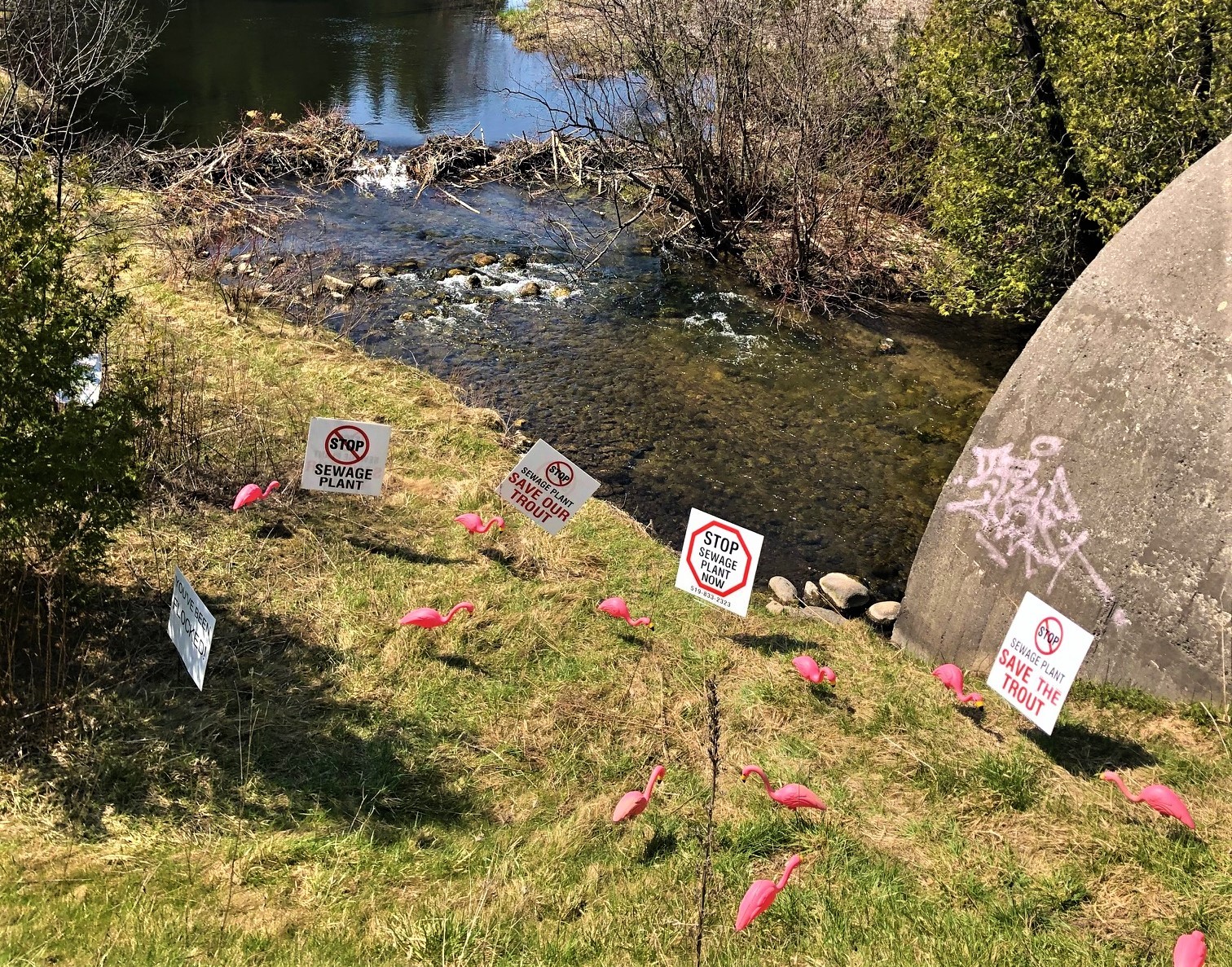
(Steven Noakes/Coalition of the West Credit River)
The petition detailed many of the concerns:
“The Town of Erin has been permitted to dump effluent into the West Credit River at one of the most ecologically sensitive areas that will forever change the water temperature and the life cycle of the brook trout in Belfountain; The downstream community was not informed appropriately of this project and so were not able to participate effectively in the consultation or the Local Planning Appeal Tribunal process.”
It continues:
“The cumulative impacts and cultural impacts have not been addressed by either the Town of Caledon, the Town of Erin or the provincial Minister of the Environment; The West Credit River is one of the last pristine cold-water fisheries in the Greater Golden Horseshoe, home to native brook trout, and providing enriched biodiversity for communities in the headwaters and downstream to Lake Ontario.”
The petition asked the federal Impact Assessment Agency to step in and take over the review of the project, to determine if any federal legislation might prevent it from moving forward. Last year, the government said it would not step in.
There was some good news in the summer when bidding for the project closed without any tenders coming forward prior to the deadline in August. This bought advocates some time.
Peel Region has since supported an initiative to ensure proper monitoring of the Credit River, if the project moves forward, and Wellington County, which has jurisdiction over the wastewater plan, has suggested it would invest in water cooling technology, but has not committed to such a measure.
Residents, meanwhile, are still hopeful the project can be stopped.
"I got two sons and four grandkids. And I think about everything that was left to me," Cowling said. "I feel there's other technologies where we don't have to disperse 7.2 million liters of treated effluent."
There have been proposals to incorporate new technologies to help reduce levels of harmful chemicals in the runoff and ensure proper oxygen levels in the surrounding water (which is impacted when the temperature rises above 19 degrees, creating risks for the Brook Trout).
"I sat out at that bridge, the bowstring bridge, and a fly fisherman came over one day when I was there. It was absolutely breathtaking.
And to think that we're compromising this for development, is totally wrong in my opinion."
Email: [email protected]
Twitter: @taasha__15
COVID-19 is impacting all Canadians. At a time when vital public information is needed by everyone, The Pointer has taken down our paywall on all stories relating to the pandemic and those of public interest to ensure every resident of Brampton and Mississauga has access to the facts. For those who are able, we encourage you to consider a subscription. This will help us report on important public interest issues the community needs to know about now more than ever. You can register for a 30-day free trial HERE. Thereafter, The Pointer will charge $10 a month and you can cancel any time right on the website. Thank you
Submit a correction about this story


